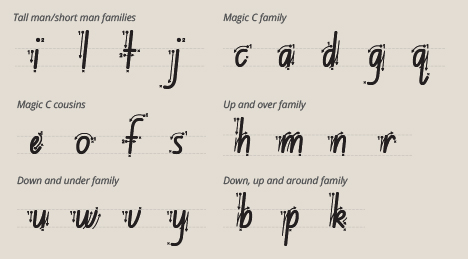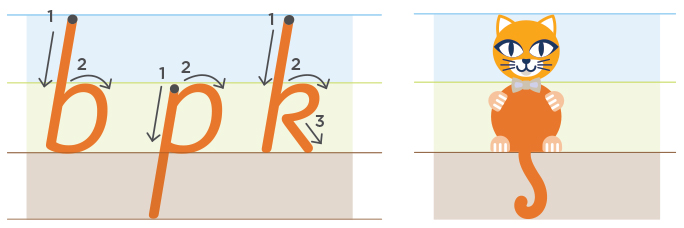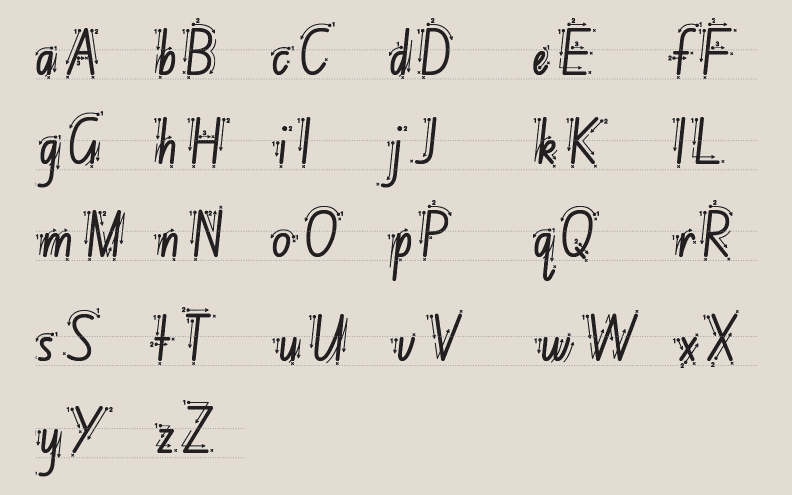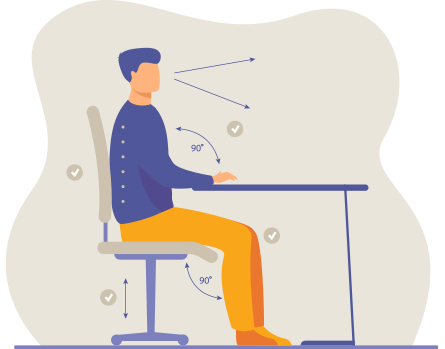Improving Handwriting
A variety of strategies can be used to assist with improving aspects of handwriting and letter formation. Ensure that only one aspect of handwriting is focused on at one time to avoid confusion (i.e. letter formation or letter spacing, not both at once).
Teach letters in groups according to the directionality in which they are formed. Start with just practising the letter by itself before putting it into words. The letter families below are organised from left to right in the order that they should be taught.’

The following strategies work well for some students:
Sky/grass/dirt: All letters sit in the grass, some go up into the sky and some go down into the dirt.
Head/body/tail: All letters have a body, some have a head and some have a tail.

Use one “finger space” between each word (see below), or students can use a popstick, pencil, graph paper, redi-space paper, or finger spacers. Encourage the student not to leave gaps within the words (eg. w ri t in g) as this further reduces the legibility of their work.

For some students, a darker writing line may be useful.
Making changes to handwriting requires regular, consistent practice. Research indicates that students need task specific practice of handwriting at least twice a week in order to get to work towards automaticity. Students benefit most from explicit teaching and particularly in the younger years (K, PP, year 1) a cognitive approach should be used over a multisensory approach.
How to form letters correctly in NSW Foundation font
This is an example of correct formations for one font. It is important to teach the font* being used
by the student’s school.

*The handwriting fonts used above and on the previous page are from Australian School Fonts www.australianschoolfonts.com.au
Sitting Posture
Poor sitting posture such as slouching over the table is an indicator of reduced postural control. Correct posture promotes better handwriting.
- Sit in a comfortable chair, with elbows resting at right angles on the desk, feet flat on the floor and back straight.
- Writing on a sloped surface can help to encourage an appropriate sitting posture.
Encouraging an efficient pencil grasp
An appropriate pencil grasp is important to ensure maximal pencil control, handwriting fluency, and speed without causing pain. An efficient pencil grasp requires the ability to use two movements: translation and rotation. Translation is the movement of objects between the fingers and palm both towards and away from the palm. Rotation is using the fingers to move an object around one or more of its axes; the object is rotated end over end or horizontally among the finger tips.
These tips may assist with the development of an efficient pencil grasp:
For younger students (up to Year 3):
- Encourage the use of thicker pencils/crayons/textas.
- Place a sticker on the pencil as a visual cue where the child should put their thumb. Ensure that the student is holding the pencil close to the tip. Right handers should hold the pencil approximately 1- 1.5cm from the tip and left handers should hold the pencil approximately 2cm from the tip.
- Ensure the 4th and 5th fingers are tucked into the palm to encourage a stable base for writing.
- Encourage the student to place their wrist down on the table to provide a stable base.
- If these strategies do not assist in the development of a mature pencil grasp, there may be an underlying reason for the difficulty. Trial a pencil grip to assist with further development of the grasp. These are available online.
For older students, take the student shopping to trial different pencil and pen options. There are a range of ergonomic pens available e.g. Stabilo Easy Ergo pens and pencils.
If the grasp is impacting handwriting legibility, reducing handwriting speed or causing pain then the student would benefit from consulting an occupational therapist.

In this section:
- Appendix 1: Processing weaknesses are common in children with learning disabilities
- Appendix 2: A Parent’s Guide to IEPs
- Appendix 3: Structured Synthetic Phonics: A Guide for Teachers and Parents
- Appendix 4: Examples of High Quality, Evidence-based Phonics Programs and Resources
- Appendix 5: Improving Handwriting and Pencil Grasp
- Appendix 6: Recommended Literacy Apps for Primary School Students
- Appendix 7: Useful Resources for parents

